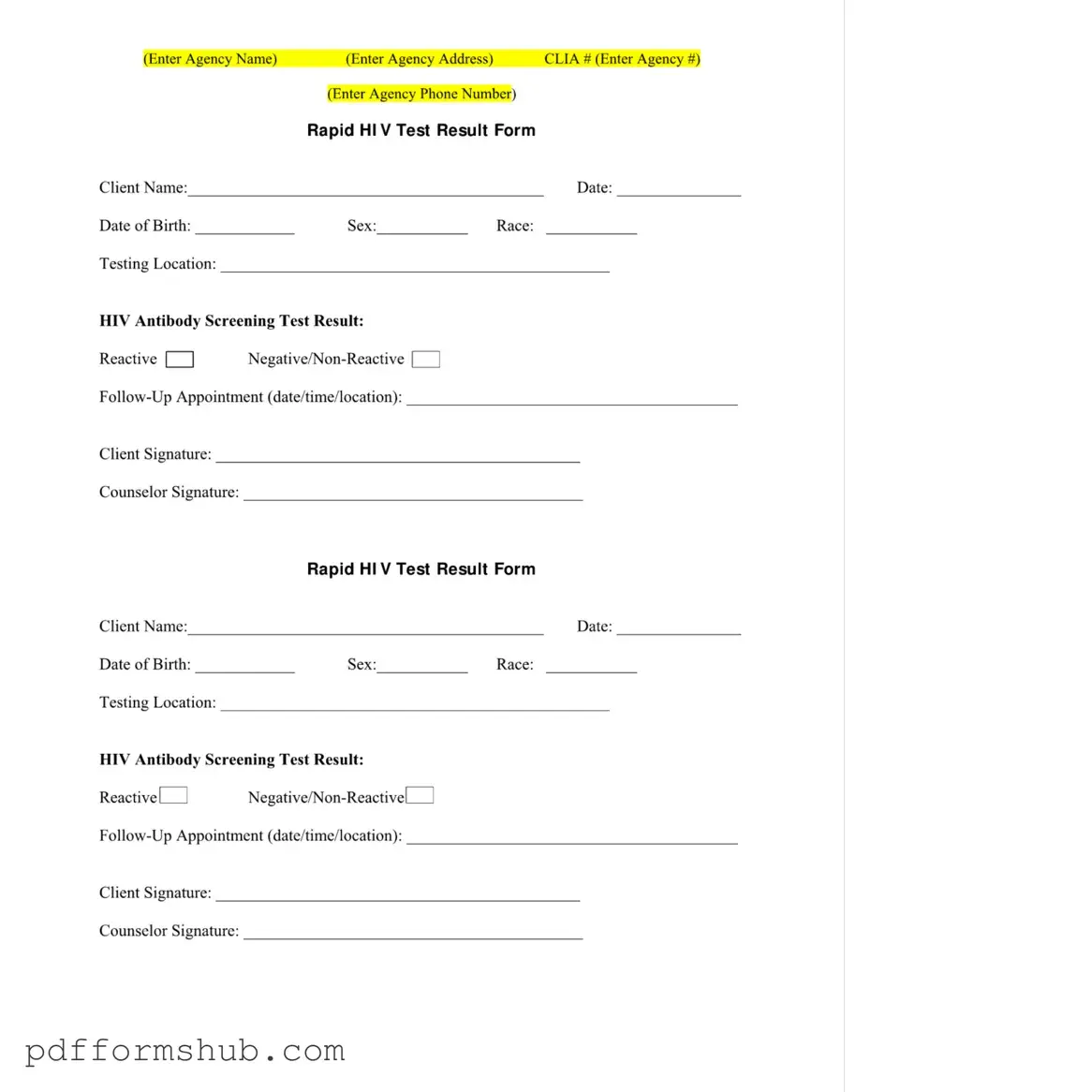The Negative HIV Test form serves as a crucial document in the realm of public health and individual wellness, reflecting both the procedure and results of HIV testing. This form typically includes essential information such as the client’s name, date of birth, race, and the testing location, ensuring that all relevant demographic data is accurately captured. It prominently displays the result of the HIV antibody screening test, which can be either reactive or negative/non-reactive, providing immediate clarity to the individual undergoing testing. Additionally, the form outlines the necessary follow-up appointment details, including date, time, and location, emphasizing the importance of ongoing care and support. Signatures from both the client and the counselor validate the process and confirm that the information has been communicated effectively. Furthermore, the form incorporates temperature logs for the storage of rapid HIV test devices and controls, which are critical for maintaining the integrity of the testing process. These logs detail acceptable temperature ranges and require daily checks, thereby ensuring that the testing materials remain viable and effective. Overall, the Negative HIV Test form encapsulates a comprehensive approach to HIV testing, blending administrative rigor with a focus on client care.
